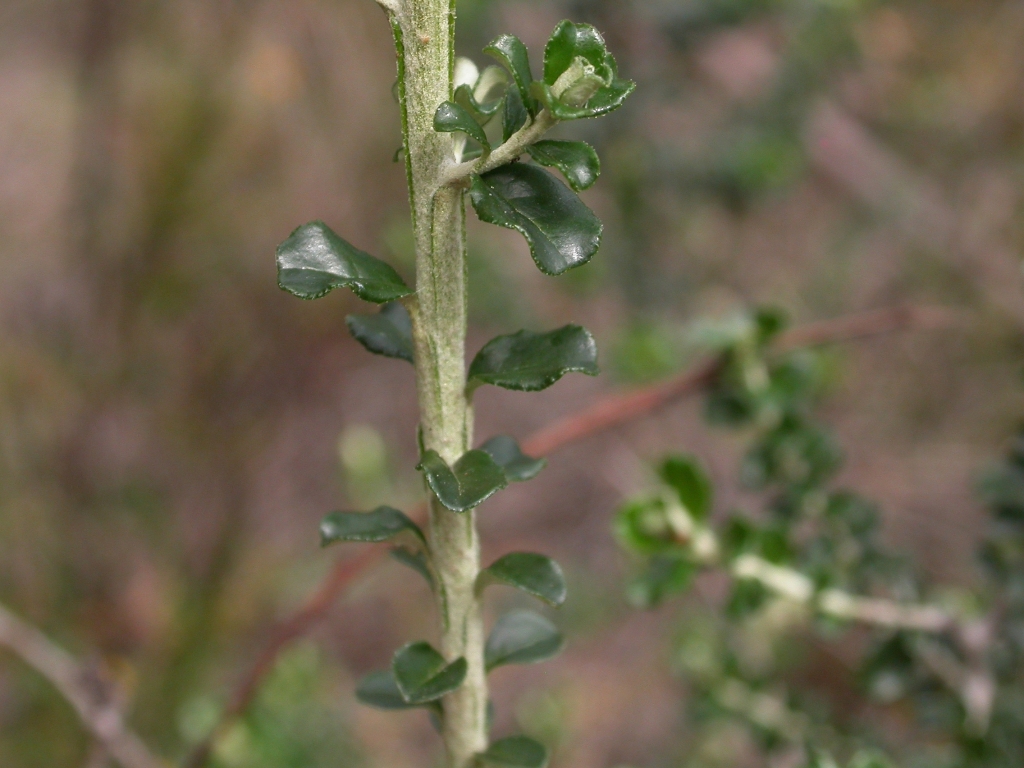Ozothamnus obcordatus
DC. Grey EverlastingErect to spreading shrub to c. 1.5 m high; branchlets densely cottony, not viscid. Leaves spreading, obovate, 3–20 mm long, 2.5–10 mm wide, smooth or sparsely scabrous above, white-cottony beneath, apex rounded or retuse, often minutely mucronate, base cuneate, sometimes with decurrent lines onto stem, margin sometimes undulate; petiole 0.5–1.5 mm long. Inflorescences corymbose, 4–10 cm diam. Capitula 150–400, yellow, cylindric, 2.5–4.5 mm long, 1.5–2.5 mm wide; involucral bracts 15–25, innermost linear, with lamina semicircular to deltoid, c. 0.5 mm long, erect, hyaline with tips occasionally white; margin entire, incurved; receptacle bracts absent (rarely 1); female florets 1–6; hermaphrodite florets 6–17(–21). Cypsela narrow-ellipsoid, c. 0.8 mm long, sparsely papillose; pappus bristles 1.5–3.5 mm long, apex tapering. Flowers Nov.–Dec.
LoM, Wim, VVP, VRiv, MuF, GipP, OtP, Gold, CVU, GGr, DunT, NIS, EGL, EGU, HSF, HNF, MonT, HFE, VAlp. Also Qld, NSW, Tas. Widespread in dryish open-forest and woodland, often on shallow rocky soils, particularly abundant in auriferous areas.
This species has 2 somewhat distinct variants previously recognized as subspecies but here combined in a single variable species. The smaller-leaved variant (corresponding to subsp. obcordatus) is largely confined in Victoria to mallee areas north and west of Melbourne, whereas larger-leaved plants (var. major) are mostly in the east of the State, with outlying populations in and near the Grampians.
Puttock, C.F. (1999). Ozothamnus. In: Walsh, N.G.; Entwisle, T.J., Flora of Victoria Vol. 4, Cornaceae to Asteraceae, pp. 732–742. Inkata Press, Melbourne.
 Spinning
Spinning
